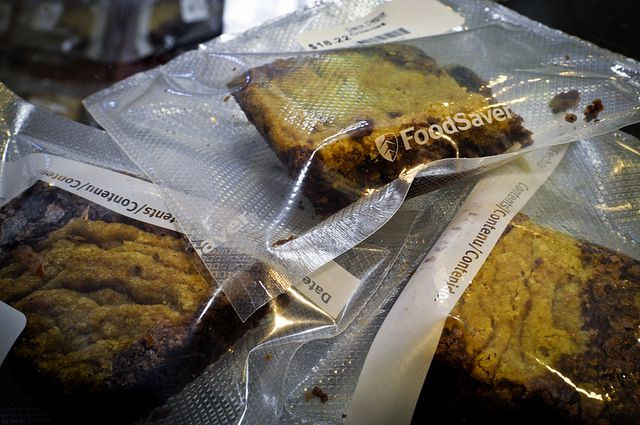Marijuana Edibles Up For Debate Over Labeling Issue In Colorado; Dept. Of Health Pushes For Ban

When it comes to marijuana edibles, they don’t get any more quintessential than the pot brownie. But nearly a year after Colorado opened up its first recreational dispensaries, the state’s Department of Public Health and Environment (CDPHE) is suggesting that, maybe, some of these edibles should be banned.
The idea of an edible ban was first suggested leading up to a meeting on Monday between the Department and an edible marijuana products stakeholder group. The Department’s request: Rather than implementing new labeling rules, just take the edibles, including brownies, cookies, chocolate bars, and sodas, off the shelves. Hard candies, lozenges, and tinctures — a liquid concentration of marijuana compounds, extracted with alcohol — however, would still be sold.
It’s a legitimate request. Since dispensaries started selling recreational weed under Amendment 64, there has been a rise in child emergency room visits due to mistakenly eaten edibles. There have been at least two deaths linked to edibles as well. One case involved a 19-year-old Wyoming student trying marijuana for the first time; he leapt to his death of the fourth-story balcony of his hotel. Another instance involved a man Denver police say was high on edibles when he shot and killed his wife. The edibles are so similar to the real thing that the Denver Police Department released a public service announcement last week warning parents about Halloween treats.
In a post-meeting memo, the CDPHE made sure to clarify it wasn’t taking any legislative action. “The recommendation from CDPHE is just that, a recommendation to a working group as part of the deliberative process,” the Departments Executive Director and Chief Medical Officer Dr. Larry Wolke said. “We fully expect it will be debated and edited through open, frequent, frank, and respectful communication between stakeholders of all stripes at all levels. Considering only a public health perspective, however, edibles pose a definite risk to children.”
Unlike the actual marijuana plant, which comes in obvious doses, edibles can contain anywhere from 10 milligrams of THC (the high-inducing chemical in weed) to 250 milligrams — such a high dose is usually meant to be split between multiple people. High Times magazine recommends eating between 10 to 25 milligrams for a muscle-relaxing high in which “waves of bliss will blanket your body.” It takes time to start feeling high with edibles, however, and some people may eat more thinking they didn’t have enough. In turn, their high goes far beyond what they expected, and they risk hallucinations, anxiety, and panic attacks — that 19-year-old student ate 65 milligrams.
New York Times columnist Maureen Dowd recently wrote about her panicky experience. “For an hour, I felt nothing. … But then I felt a scary shudder go through my body and brain. I barely made it from the desk to the bed, where I lay curled up in a hallucinatory state for the next eight hours. … I was panting and paranoid, sure that when the room-service waiter knocked and I didn’t answer, he’d call the police and have me arrested for being unable to handle my candy.”
Dowd, however, was reportedly warned about the potency of edibles before she tripped, according to The Huffington Post. In an interview with a medical consultant the next day, she was told that candy bars like the one she ate should be split into about 16 pieces for novices. She couldn’t find that information on the label, she said.
Labeling has been an ongoing problem with edibles. Edibles are currently required to be held in childproof packaging with labels that warn about marijuana content, a list of non-organic pesticides or fungicides used to produce them, and a list of solvents and chemical used to produce the concentrate. Not all edibles are tested for potency, but if they are, they need to be on the label too — and that’s the central problem; it’s not required.
Though the recommendations probably won’t move forward, people involved in producing marijuana edibles should be moving toward better regulations regarding the labeling of marijuana food products. If proper labeling can be combined with education regarding edible use, both children and adults won’t have to suffer from panic attacks and the like.
Published by Medicaldaily.com



























